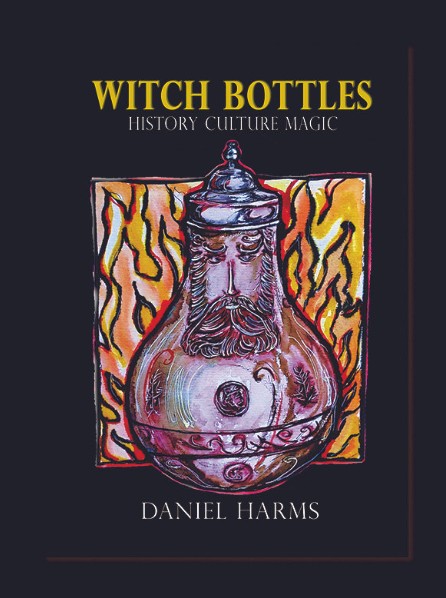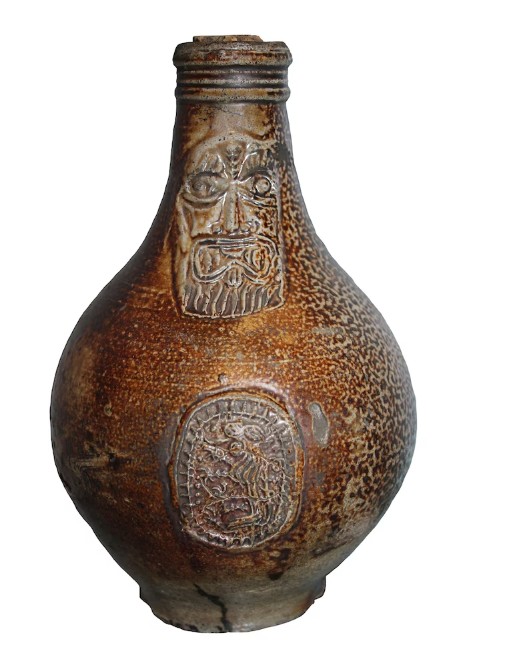Witch bottles. History, culture, magic
Daniel Harms
Avalonia Books, October 31, 2022, 118 p.
Paperback & Kindle editions available. ISBN 978-1-910191-00-2.
This is a concise yet richly detailed study of the folk‑magical practice known as “witch bottles”. It offers a thematic and chronological exploration of this artefact, as an aspect of domestic magic. The book begins with a foreword by Alexander Cummins, who characterises the unearthed witch bottle as a “murky treasure” encapsulating historical strategies for counter‑witchcraft. Harms defines the essential elements of a witch bottle: typically involving a sealed vessel containing urine plus sharp objects (pins, nails, thorns), employed to trap or repel malefic intent.
Through meticulously referenced scholarship crossing folklore, archaeological findings, and historical records, Harms traces the origin and evolution of witch bottles. He notes, “Witch bottles are rapidly becoming part of the heritage, not just of one person, but of the world, and granting them to our public institutions and museums will do much to help us to unlock their meaning, to the people of both the past and present.”
He covers the period from 17th-century England, particularly East Anglia, where many early examples arise, through the 18th and 19th centuries, with case studies including buried artefacts found in homes, hearths, and public buildings; and cross-geographical extensions into Scandinavia and North America.
The book includes chapters on typology, ritual use, geographic distribution, modern-day usage, and the cultural significance of witch bottles. Harms integrates folklore, archaeology, legal records, and material culture insights, with detailed footnotes and an extensive bibliography.
With illustrations by Emily Carding (Cover), Heloisa Saille and design by Avalonia, the book is both informative and aesthetically pleasing.
It is strongly recommended for folklorists, historians and anyone interested in how tangible objects — urine‑filled, pin‑studded bottles — encode beliefs about protection, witchcraft, and their usage in domestic rituals. Its concise size makes it an excellent entry point, while its references pave the way for further research.
About the author
Dan Harms is a librarian and author living in central New York. He has a master’s in anthropology from the University at Buffalo and a master’s in library and information science from the University of Pittsburgh. His fascination with magical belief and practice has led him to research and publish a great deal in the areas of folklore, ritual magic, and their appearances in literature.
His past works include The Cthulhu Mythos Encyclopedia, The Necronomicon Files (with John Wisdom Gonce), The Long-Lost Friend (editor), The Book of Oberon (with Joseph Peterson and Daniel Clark), William Dawson Bellhouse, Wax Images, Of Angels, Demons, and Spirits (with Daniel Clark), Balloonists, Alchemists, and Astrologers, and The Book of Four Wizards (with S. Aldarnay, forthcoming).
His articles have been published in Abraxas, Folklore, Fortean Times, The Journal for the Academic Study of Magic, The Journal of Scholarly Communication, The Journal of the Western Mystery Tradition, Thanatos, and The Unspeakable Oath. He has spoken at Treadwell’s in London and at conferences at Oxford, Western Michigan University, and Waterloo University, among others. He is also an avid roleplaying gamer, and occasionally writes for publishers including Chaosium, Arc Dream, and others.
References
This 17th-century Bellarmine jug from Lincoln, United Kingdom, features the iconic bearded face of a “Bartmann”. Often used as ”witch bottles”, these stoneware jugs were filled with sharp objects or bodily fluids to ward off curses and malevolent forces.
Photograph by Sabena Jane Blackbird, Alamy
See: https://www.nationalgeographic.com/history/article/witch-bottles-rituals-superstition-17th-century


